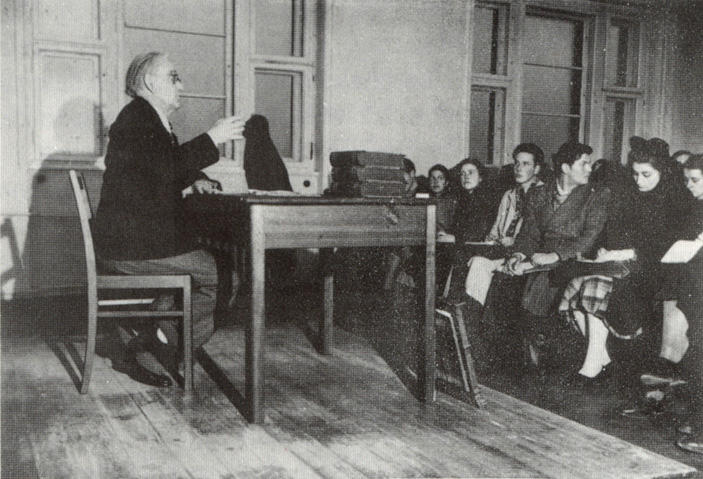History of the Department
The Art History Department was an integral part of the founding of Freie Universität in western Berlin in 1948. Its first major figure was Edwin Redslob (1848-1973), Reichskunstwart (Minister of Arts) of the Weimar Republic, who had swiftly fallen into disfavor after Hitler's seizure of power and after 1934 played a leading role in the western part of the city as founder of the city daily "Der Tagesspiegel". In 1949 he became Rector of the new university, having already often taken over the administrative duties of the seriously ill founding Rector Friedrich Meinecke. Redslob's design for the emblem of Freie Universität, "Veritas, Iustitia, Libertas" (Truth, Justice, Freedom), still reminds us of our outstanding second Rector, whose great personal dedication and integrity of character were also instrumental in securing financial support for the University at the time of its founding, and thus established the basis of its success. In 1950, at the invitation of President Dwight D. Eisenhower, he was the first Rector of a German university to visit the USA and American universities. Following Redlob's visit, the Student Council of Columbia University passed a resolution that half of all funds collected for the benefit of the World University Service should be assigned exclusively to Freie Universität.

A lecture by Edwin Redslob 1948/49
Over the following decades, the Art History Department of Freie Universität developed into an academic educational institution whose prominence today is comparable to that of the Art Department of the Friedrich-Wilhelms-Universität before the war.
In 1957 Hans Kauffmann was appointed to the Department. One of the leading art historians left in the country, he was in a certain sense, as a member of the group surrounding Hofstede de Groot, a desecendant of the great pre-1933 tradition. Kaufmann's important monographs on Donatello and Bernini were written in Berlin.Otto von Simson was appointed in 1964. He was one of the most prominent emigrants, who, following a period as Professor in Chicago, had been successful as the ambassador of the German Federal Republic to UNESCO. Heinrich Thelen, a specialist in Italian Baroque art, was appointed in 1968. A further professorship was established in 1969 with the appointment of Tilmann Buddensieg. During the eventful later 60's numerous notable figures graduated from the Institute. Feared at the time for their potential as protestors, they are now prominent representatives of their field at home and abroad. They were all active in Berlin, at least as tutors or assistant lecturers. In the following years the Institute expanded considerably. Around 1980 two scholars specializing in French art were appointed: Thomas Gaehtgens (1980) and Reiner Haussherr (1981). Through their influence they were able to increase the number of professorships considerably, extending the Institute until in the 90's, with seven life-long professorships and a large number of honorary professors and assistant lecturers, it had become one of the biggest in Germany. Particular emphasis was given to international cooperation: close connections continue to exist to the Bibioteca Herziana in Rome and the German Art History Institute in Florence; from Berlin Thomas Gaehtgens founded the Paris Forum of Art History in close cooperation with the Art History Department of Freie Universität. From 1985 – 1997 Hellmut Lorenz (now Professor of Art History at the University of Vienna) taught history of architecture. And thanks to Rudolf Preimesberger, from 1989 the Department enlarged its scope to become a center of research on art and art theory in Italy in the early modern period.
Since 1999, with the help of generous support from the Gerda Henkel Foundation, the Art History Department has also been able to offer a degree program in Far Eastern Art History. From 2007, South Asian Art History can also be studied in the Department.
The Department currently has 9 full-time professors. Together with a large number of honorary professors and assistant professors they represent their field with a breadth and a variety of method which is exceptional in the German-speaking world. For up-to-date information on their specializations in research and teaching follow the link "Faculty and staff".